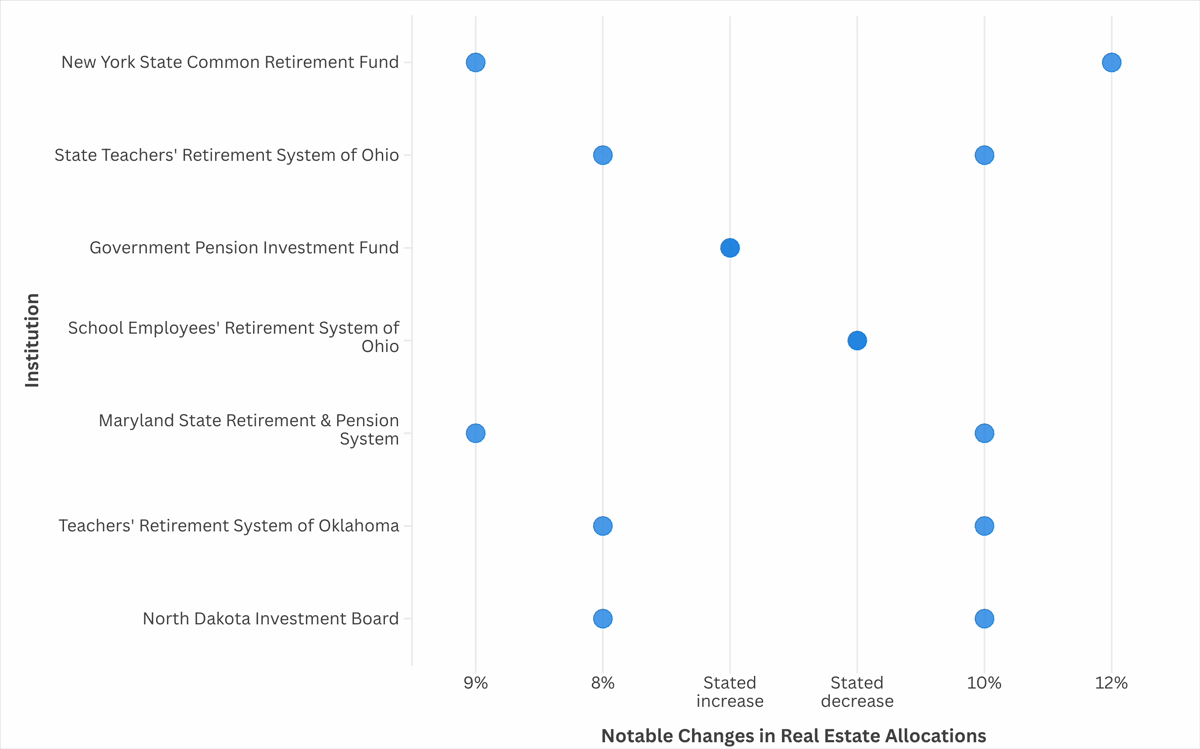
Report expects allocations to rise again next year
Oct 24, 2025, 12:30 PM UTC
Subscribe to TRD Data to unlock this content
Institutional investors this year planned to put fewer funds into real estate, while the gap between what they actually put into the sector compared to what they planned to, widened.
Large investors like pension funds decreased their targeted allocations into real estate by 10 basis points to 10.7 percent, according to the 2025 Institutional Real Estate Allocations Monitor. The report, conducted by the Cornell Baker Program in Real Estate and capital advisory firm Hodes Weill & Associates, included responses from 166 participants from 26 countries. Together, they represent $14.7 million in assets under management, $1.4 trillion of which are investments in real estate.
From 2013 to 2025, institutional investors had increased their real estate targets by 20 percent. However, they held their investment levels into real estate at 10.8 percent from 2022 to 2024. This year’s drop was the first since the report launched in 2013.
The report attributes the decline to economic uncertainty, high interest rates and geopolitical concerns.
Subscribe to TRD Data to see this content!
There also has been more competition for investment into other sectors. For instance, 60 percent of the survey’s respondents pointed to private credit as a top contender over real estate. Fifty-nine percent of respondents cited infrastructure.
And as targeted allocations fell, so did the amount that institutions actually invested into real estate. In 2025, the participating institutions said they put about 9.8 percent of their allocations into the sector — not 10.7 percent as expected. This actual percentage of invested funds was down from 10.3 percent last year. Many investors, in light of bigger-picture concerns coupled with underperformance in the asset class, have adopted a “wait-and-see” approach in deploying capital, the report said.
Subscribe to TRD Data to see this content!
The report anticipates that overall, target allocations are expected to rise again next year, back to 10.8 percent.
Among the institutions surveyed, 70 percent plan to keep their commercial real estate allocations goal steady in 2026. Twenty-one percent plan to increase them, up from 13 percent last year. Ten percent intend to decrease them, down from 17 percent last year.
The New York State Common Retirement Fund, which has $283.9 billion in assets under management, is one investor that plans to increase its target allocations to real estate to 12 percent from 9 percent. The Teachers’ Retirement System of Oklahoma, with $23.7 billion in assets under management, plans to decrease its allocations into the sector to 8 percent from 10 percent.


